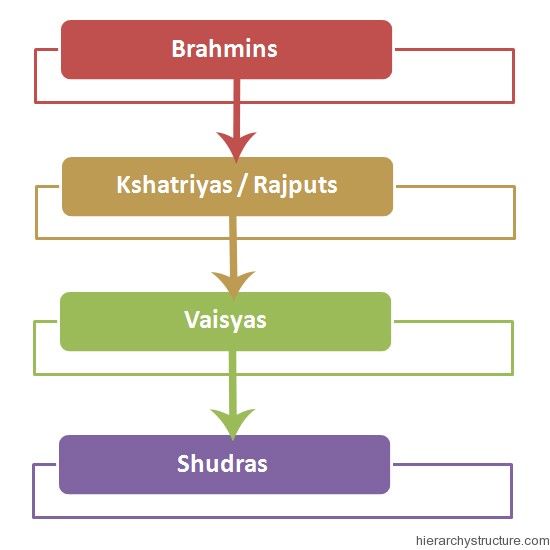Social class system is a group of terms and concepts followed to incorporate social sciences and political theories in the society centered widely for social stratification. People used to be divided and grouped into a properly managed set of hierarchies’ social categories. This system was widely spread in the world for many centuries.
Even India was immensely influenced by the social class division system. In actual practice, India once used to be referred to as a class society country. Some people were considered superior while some inferior. Ancient India social hierarchy was broadly divided in four major categories and these were:

- Brahmins
- Kshatriyas
- Vaisyas
- Shudras
The division was not based on the power but based on purity. Moreover, this kind of division streamlines the society, as the tasks to be done by all the groups were clearly defined.
Now if we consider the appropriate ancient Indian social hierarchy then this structure can be organized in a well-customized order. The order is described below starting with the top most level of the hierarchy and then proceeding forward in descending order.
Brahmins
Well this group of people were categorized on the top of the ancient Indian social hierarchy. These were not the most rich or powerful people of the time but were very respectful and prestigious people. Even the kings used to listen to the Brahmins.
These people were engaged in attaining the highest spiritual knowledge and adhered to different branches of Vedas, the holy books of India. Being a Brahmin was described to be a difficult path of discipline of body, mind, and intellect.
Kshatriyas / Rajputs
The next level in the ancient Indian social hierarchy is of Kshatriyas or Rajputs. Kshatriya basically means a warrior. They were the people who used to be the king and belonged to royal families normally.
Being a Kshatriya or a Rajput was considered to be a matter of respect and proud. Bravery was the perfect word to describe these people. The Rajputs eventually came to occupy the place in society of the Kshatriyas. They possessed special rights and powers in the society. This class was the governing body of the society and protection of the society was their duty.
Vaisyas
Vaisyas are the next level in the ancient Indian social hierarchy. According to the Hindu mythology, the Vaisyas are required to rear cattle and perform the productive labor, pastoral tasks, trade and agriculture. This class includes the common people. They were provided with little rights of their own.
Shudras
This was the lowest class of the ancient Indian social hierarchy. Eating anything or talking to these people was prohibited in the society to people of other classes. These people acted and worked as servants to the other three classes. These people were provided with very little or almost no rights and power of their own.
